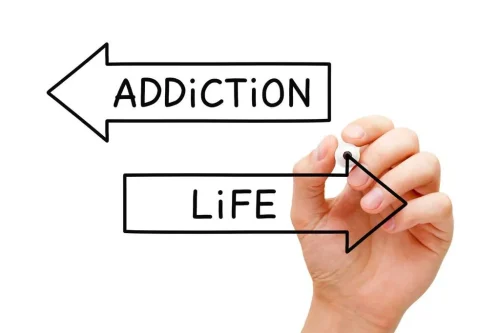
This CME/CE credit opportunity is jointly provided by the Postgraduate Institute for Medicine and NIAAA. Interestingly, those with the poorest impulse control — who would be considered most at risk of relapse after a period of sobriety — responded alcohol and dopamine best to the treatment. These findings could explain why men are more than twice as likely as women to develop an alcohol use disorder. Dopamine plays many important roles in the body, affecting moods, memory and sensations of pleasure and pain.

Behavioral tasks
When compared alongside the male macaques from Cohort 2, which did not undergo multiple abstinence periods, we can begin to assess the effect of the abstinence periods on our measured outcomes, as well as, the persistence of these outcomes. For example, the subjects from Cohort 3 demonstrated an escalation in the severity of drinking category following each “relapse” period (Fig. 1E). This effect has been examined in greater detail elsewhere and was found to be driven primarily by the first month of drinking, post abstinence [32].
- In addition, dopamine can affect the neurotransmitter release by the target neurons.
- New animal models of binge alcohol intake, such as the alcohol deprivation effect (ADE) and the “Drinking-in-the-Dark” technique, would help us to develop new treatment methods against alcohol dependence.
- Gene expression of cholinergic interneuron markers and several nAChR subunits was not changed following chronic alcohol consumption and abstinence (D, E).
- The review paper will give an overview of the neurobiology of alcohol addiction, followed by detailed reviews of some of the recent papers published in the context of the genetics of alcohol addiction.
- Prefrontal cortical circuits have been implicated in impaired executive control that underlies excessive drinking, as well as weakened cognitive function in AUD.
- In order to avoid getting too much of a good thing, it can be helpful to have boundaries.
Health Categories to Explore

Together, altered excitability of striatal neurons and upstream cortical regulation of striatal activity influence a diverse range of drinking behaviors, which likely can be attributed to distinct striatal output circuits [108]. Ethanol is a liposoluble neurotropic substance which penetrates the blood-brain barrier and inhibits central nervous system (CNS) functions; it is directly toxic to the brain. The etiology and pathology of alcohol dependence is the outcome of a complex interplay of biological, psychological and socio-environmental factors. CNS neurotransmitters play an important role in the development of alcohol addiction. Caffeine Caffeine is self-administered by animals [148, 162, 163] and produces conditioned flavor preferences (low doses) or conditioned place aversions (high doses) in rats when injected intraperitoneally or directly into the VTA [164]. A dopamine antagonist injected into the shell of the ventral striatum blocks these place preferences, whereas the antagonist injected into the core of the ventral striatum blocks the conditioned aversive effects [165].
Sex Addiction
The GAL4 transcription factor can then activate any UAS-based reporter or effector transgene in a spatiotemporal specific expression fashion. For instance, Kondo et al142 demonstrate the expression patterns of ionotropic glutamate receptors in the adult brain https://ecosoberhouse.com/ and larval muscle tissues. They further calculate that an average adult neuron expresses 30% of known neurotransmitter receptors. The T2A-GAL4 cassettes can also be replaced with other reporter cassettes for endogenous protein tagging and activity reporters.
Dopamine D2/3 autoreceptor sensitivity was decreased in chronic alcohol self-administering male macaques
- Dopamine is a neuromodulator that is used by neurons in several brain regions involved in motivation and reinforcement, most importantly the nucleus accumbens (NAc).
- While dopamine plays an important role in the body’s reward system, it isn’t solely responsible for addiction.
- In the United States of America, alcohol use disorder (AUD) accounts for annual economic losses of ~$250 billion [2] and ~88,000 deaths [3].
- KORs have also been shown to modulate the acute actions of alcohol [92], negative affect during withdrawal [93], and the sensitivity of this receptor is augmented after chronic alcohol use [73].
In fact, we sometimes feel so good that we seek out those experiences over and over again. Mood and anxiety disorders are common alcohol abuse disorders with one large epidemiological study showing that over 30% of individuals with alcohol dependency had a co-morbid mood disorder [19]. Thiamine deficiency in alcohol dependence occurs because of poor absorption of thiamine from the GI tract, impaired thiamine storage and reduced thiamine phosphorylation in the brain, reducing the amount of active thiamine in the brain.
Posttranslational modifications such as phosphorylation are core molecular signaling events. For instance, the protein tyrosine kinase (PTK) Fyn, through the phosphorylation of GluN2B in the dorsomedial striatum (DMS) of rodents, contributes to molecular and cellular neuroadaptations that drive goal-directed alcohol consumption [51,52]. Interestingly, Fyn also plays a role in heroin use [53], suggesting a more generalized role of the kinase in addiction. Furthermore, GsDREADD-dependent activation of the serine/threonine kinase protein kinase A (Pka) in the DMS of mice activates Fyn specifically in D1R MSNs to enhance alcohol consumption, suggesting that Pka is upstream of Fyn [54]. Indeed, a large body of evidence supports the role of Pka signaling in the actions of alcohol [3].


Thus, the connection between the trans-species conserved changes can be explored in the more tractable rodent models. As an update to traditional protein tagging, the tissue-specific tagging of endogenous proteins (T-STEP) was created.143 The T-STEP method simultaneously RFP-tags an endogenous protein and then allows tissue-specific rippase recombination to switch the tag to a GFP signal. Given that the actions of ethanol on dopamine and serotonin receptors appear to be circuit specific, these tools would be especially helpful in resolving the changes in receptor expression in discrete circuits before and after different alcohol exposure paradigms.
Is There a “Safe” Amount of Alcohol for the Brain?
Other lines of research related to alcohol withdrawal reinforce this model of alcohol-related changes in DA. While drinking initially boosts a person’s dopamine levels, the brain adapts to the dopamine overload with continued alcohol use. It starts to produce less of the chemical, reduce the number of dopamine receptors in the body and increase dopamine transporters, which ferry away the excess dopamine in the spaces between brain cells. Candidate genes suggested in the development of alcohol addiction are involved in the dopaminergic, serotoninergic, GABA and glutamate pathways. In a resting animal, the release of dopamine is detected historically by microdialysis [58]. Baseline levels of dopamine are estimated to be around 5 nM [59, 60]; microdialysis can measure dopamine levels this low and much lower; microdialysis—in tetrodotoxin-treated animals—can measure dopamine at 1% of baseline levels [61].
This 44 bp deletion occurs 1 kb upstream from the transcription initiation site of the gene.[53] This is depicted through the following diagram [Figure 4]. Alcohol is one the most widely used and abused drugs in the world and the number of annual alcohol-attributed deaths exceeds 3 million [1]. In the United States of America, alcohol use disorder (AUD) accounts for annual economic losses of ~$250 billion [2] and ~88,000 deaths [3]. “If you’re using alcohol to cope with stress or anxiety, if you’re going out and intending to drink one drink and you’re not able to stop yourself from drinking, it’s important to talk to your doctor and meet with a specialist,” encourages Dr. Anand. If you drink for long periods of time, it can cause depression, and when you abruptly stop drinking, it can cause anxiety,” says Dr. Anand.
Neurobiologically, striatal dopamine alters intracellular signaling that affects synaptic plasticity [42]. Activation of D1 dopamine receptors increases the excitability of the direct pathway medium spiny projection neurons (MSNs) [59], while D2 receptor activation inhibits GABAergic synaptic transmission within striatum through presynaptic actions on indirect pathway MSNs. In addition, D2 receptors can alter striatal dopamine and acetylcholine levels and inhibit cortical glutamatergic transmission directly or indirectly [60,61,62]. Furthermore, the balance of altered dopamine changes and subsequent effects on cellular excitability and fast synaptic transmission in the caudate and putamen will likely dictate the relative behavioral control by the associative and sensorimotor circuits. In this context, the decreases in release in the putamen of the repeated abstinence male monkeys may limit behavioral plasticity to a greater extent in this region relative to the caudate. This could be one factor contributing to the development of invariant alcohol consumption following long-term drinking with repeated abstinence observed in a previous study of cynomolgous macaques [8].